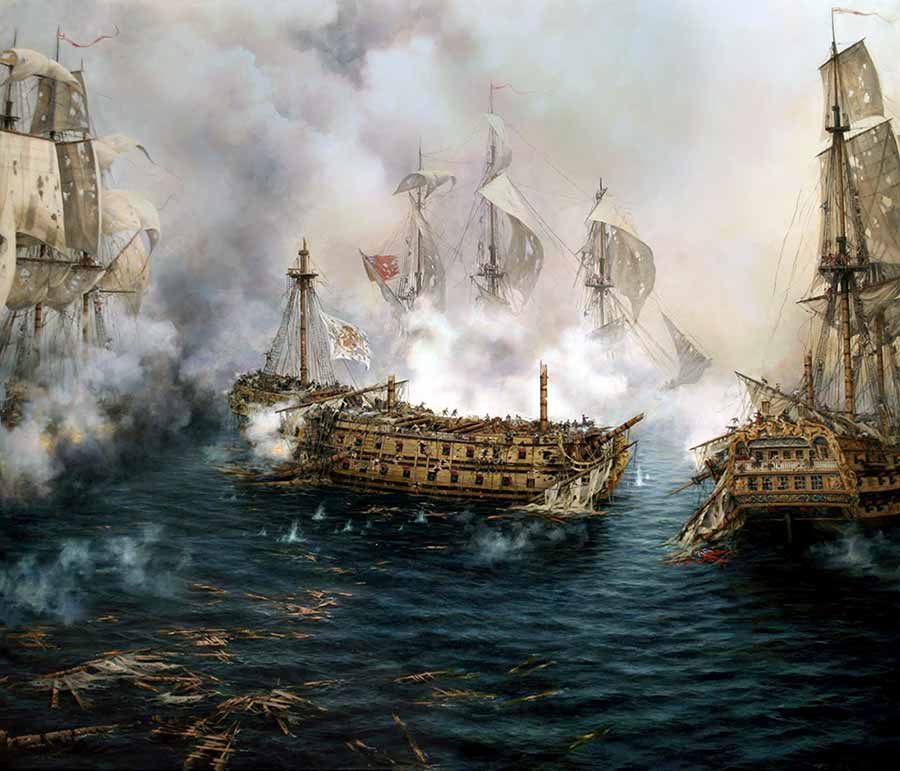‘The last combat of Glorioso’
The Glorioso was, in 1747, a Spanish 70-gun ship which was fighting the British in the War of the Austrian Succession.
She was involved in four naval engagements with several British squadrons of ‘ships of the line’ and frigates which tried to capture her.

Painting - www.todoababor.es/historia/
The Glorioso, carrying four million silver dollars from the Americas, was able to repel two British attacks off the Azores and Cape Finisterre, successfully landing her cargo at the Corcubión, Spain.
Several days after unloading the cargo, while sailing to Cádiz for repairs, Glorioso was repeatedly attacked near Cape St. Vincent by four British ‘privateer’ frigates and the ships of the line HMS Dartmouth and HMS Russell from Admiral John Byng’s fleet. The Dartmouth was blown up, killing most of her crew, but the 92 gun Russell eventually force the Glorioso to surrender.
The British took her to Lisbon, where she had to be broken up because of the extensive damage suffered during the last battle. The commander of the ship, Pedro Messia del la Cerda, and his men were taken to Great Britain as prisoners, but were considered heroes in Spain and gained the admiration of her enemies. Several British offices were court-martialled and expelled from the Navy for their poor performance against the enemy.
Well yesterday King Felipe VI, presided the official presentation of a painting of the Glorioso, work of the painter Augusto Ferrer Dalmau at the Naval Museum.
The academic and writer, Arturo Pérez-Reverte, gave the painter his insight as being an expert in the recreation of historical events and especially those which have the Spanish Armada at the centre of the action.
‘The last combat of the Glorioso’ is an oil painting measuring 170 x 190 cms and has been donated by the Friends Association of the Naval Museum, and painted to remember the historic event, as she only surrendered after three battles against twelve enemy boats after she had completed her job of bringing the money.
